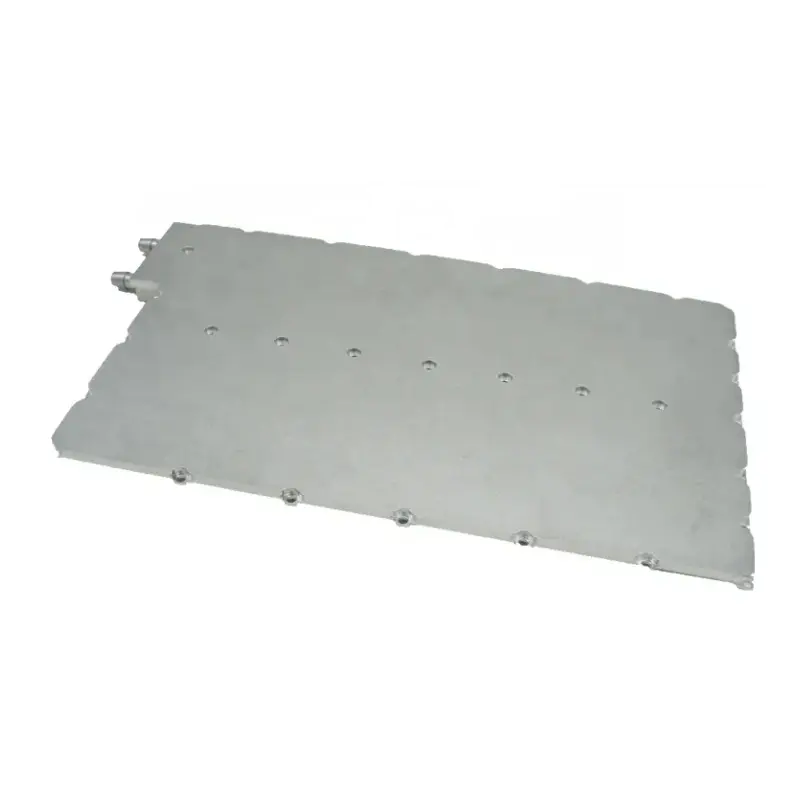The electric vehicle (EV) industry is growing rapidly as the global demand for sustainability continues to grow. Sales of EVs have statistically increased dozens of times in the past decade, and market penetration continues to grow. The battery is the “heart” of an EV, providing power to the vehicle. It not only determines the range of the vehicle, but also directly affects the acceleration performance and overall energy efficiency of the vehicle. However, batteries generate a lot of heat during operation, which poses a serious challenge to their performance and lifetime, as well as to the safety of the vehicle.
What is an EV Battery Liquid Cooling Plate?
Effective thermal management is critical for EV batteries.High temperatures can lead to reduced performance, accelerated aging, and even safety issues, while low temperatures can significantly reduce the efficiency of battery charging and discharging.To ensure that the battery operates within the optimal temperature range, an efficient thermal management system is required.One of the core components is the cold plate.
The battery cold plate plays an important role in the battery management system.It transfers the heat generated inside the battery to the coolant by conduction or convection, and then circulates the heat out of the system.The integration of the cold plate with the battery management system not only performs the function of heat dissipation, but also the function of monitoring and controlling the temperature, which can intelligently keep the battery of the electric vehicle in the best condition.
Key technologies of Lori EV Battery Cooling Plate

1. Cooling Channel Design
Lori EV battery water cooling plates are able to customize the design of complex cooling channels for the flow of coolant, Lori channels are designed to avoid dead spots and uneven flow of coolant, maximize the contact area between the liquid flow and the battery surface, thus optimizing the heat transfer efficiency, and ensuring the entire battery pack maintains a uniform temperature distribution during operation.
2. Material Selection
The materials used for the Lori EV battery cold plate are mainly aluminum and copper. Aluminum alloy is a common EV water-cooling plate material, which is widely used because of its good thermal conductivity, lower weight, and cheap price, wherein aluminum alloy is usually stamped into the desired shape of the cooling plate using a press machine, including cooling channels and other structures, to create aluminum stamped water-cooling plates to cool the batteries of the EV. Copper is also an option when higher thermal conductivity is required, but is typically used in higher performance applications due to its higher cost and heavier weight.
3. Sealing and Leakage Prevention Technology
The sealing of battery water cooling plate is critical and high quality sealing materials and techniques must be used to prevent water leakage. Commonly used sealing technologies include O-rings and sealants. In order to improve the durability of water-cooled plates in various environmental conditions, the cooling channels and connecting parts are usually treated with corrosion-resistant coatings.
4. Manufacturing Process
Lori Battery liquid cooling plates are manufactured using precision CNC machining technology to ensure accurate dimensions and good surface finish of the cooling channels to improve heat transfer efficiency and reliability. Welding processes, such as vacuum brazing and friction stir welding, are used to provide strong and airtight connections to the cooling plates to avoid water leakage problems.
With innovative technology, efficient heat dissipation performance and customized services, Lori EV battery cooling plates provide a reliable thermal management solution for the electric vehicle industry. As EV technology continues to evolve, Lori will continue to lead the industry in innovation and contribute to the future of electric mobility.






